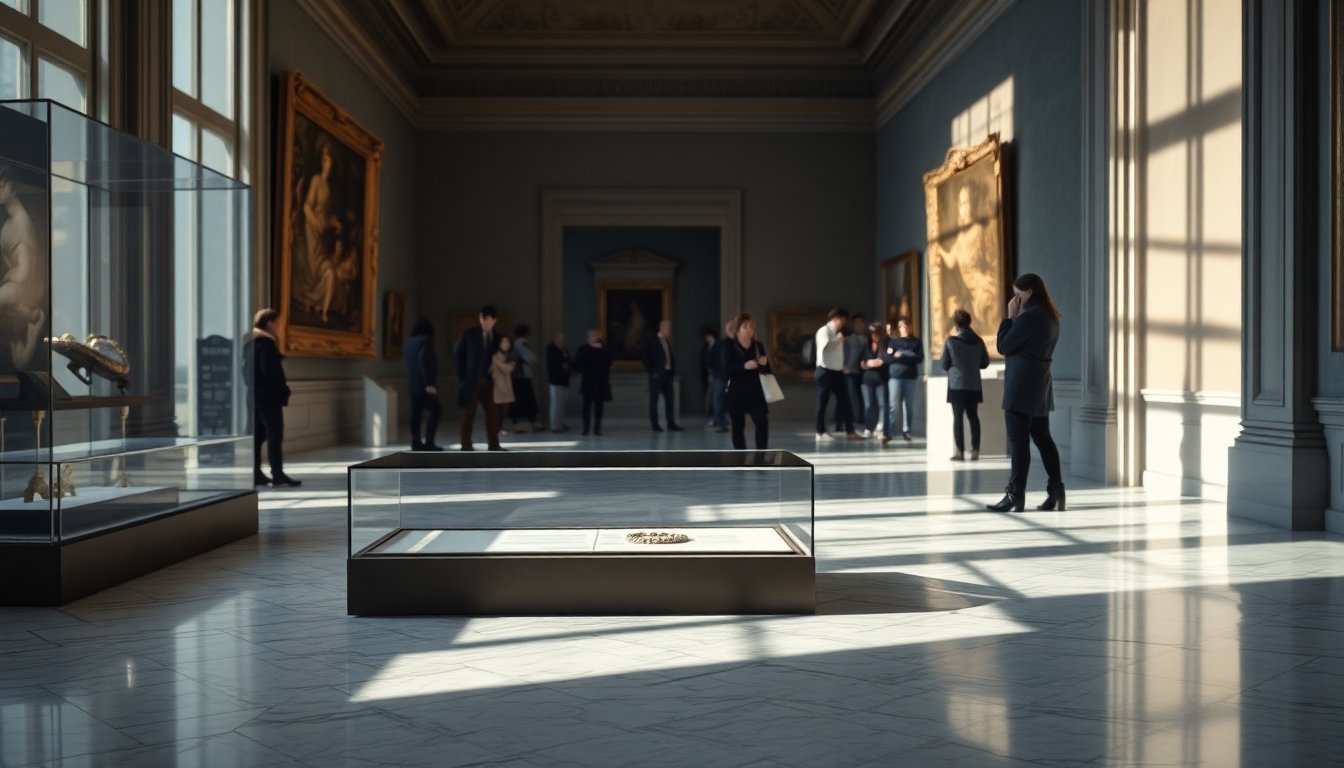Table of Contents
In a series of bold thefts that have shocked the art community, two significant heists occurred in France within a short timeframe. The most notorious of these was the robbery at the Louvre Museum, where a valuable crown jewel was stolen, overshadowing another theft just hours earlier at a museum dedicated to the philosopher Denis Diderot.
This article explores the details of these incidents and their implications for the preservation of French cultural heritage.
The heist at the Louvre on October 19 has been described as a meticulously executed operation. Four disguised assailants accessed the prestigious Galerie d’Apollon using a lift, managing to break into two secure display cases within seven minutes.
Among the items taken were several priceless jewels, including a crown valued at over 15 million euros. The audacity of this theft has prompted discussions about the adequacy of security measures at one of the world’s most visited museums.
The Diderot Museum theft
Coincidentally, the heist at the museum honoring Denis Diderot took place just hours before the Louvre incident, resulting in the theft of approximately $100,000 worth of historical coins. This museum, celebrating the Enlightenment era, found its collection vulnerable during the same wave of criminal activity.
The stolen coins, which hold significant historical value, have raised alarms about the safety of cultural artifacts across France.
While the thefts have garnered international attention, they also reflect a broader issue regarding the security protocols of museums in France.
Following these crimes, the French Minister of Culture, Rachida Dati, emphasized the need for a reassessment of security measures, citing a neglect of museum security over the past four decades. This has led to increased scrutiny of museum management and their preparedness for such incidents.
Impact on cultural heritage
The implications of these thefts extend far beyond the immediate loss of valuable items. The cultural significance of the stolen artifacts is profound, as they represent not just monetary value but also the narrative of France’s rich history. The crown of Empress Eugenie, for instance, crafted in 1855 and adorned with precious stones, symbolizes the grandeur of the Second Empire. Its loss is viewed as an attack on the nation’s heritage, sparking outrage among historians and the public.
The theft of artifacts like those from the Diderot Museum raises questions about the responsibility of institutions to safeguard their collections. As these events unfold, there is a growing call for museums to adopt more advanced security technologies, including surveillance systems and improved access control measures, to prevent future incidents.
Responses and future measures
In response to the theft at the Louvre, museum officials have temporarily closed the Galerie d’Apollon to conduct a thorough investigation and implement enhanced security measures. Plans are underway for a complete restoration of the stolen crown, with efforts to replace any missing gems. This incident serves as a catalyst for improving security and reinforcing the significance of protecting cultural heritage.
As the investigation continues, authorities are diligently working to track down the perpetrators. The timely recovery of some stolen items has offered a glimmer of hope, yet the broader implications of these thefts remain concerning. The Brigade de répression du banditisme in Paris has been tasked with the investigation, emphasizing the need for collaboration between cultural institutions and law enforcement agencies.
A call for vigilance
The recent museum thefts have underscored the importance of vigilance in preserving cultural artifacts. As discussions regarding museum security gain momentum, it is clear that a proactive approach is necessary to safeguard the treasures of the past. Enhanced training for staff, regular security audits, and the adoption of state-of-the-art technology are vital in fortifying museum defenses.
The cultural landscape of France is at a critical juncture, as these thefts serve as a reminder of the fragility of cultural heritage. It is essential for both institutions and the public to remain engaged in discussions surrounding the protection of these invaluable treasures to ensure they endure for future generations.





